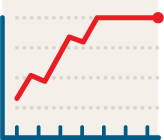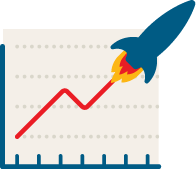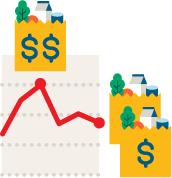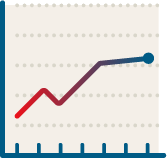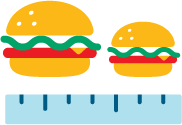Inflation’s still stealing headlines, and so are related buzzwords. To help keep you up to date on the latest terms, we’ve compiled a handy shortlist.
Core inflation is a measure of inflation that excludes the most volatile categories of food and energy, because the price of these goods and services tends to fluctuate more than others.
Removing food and energy from the mix helps give a more accurate picture of the overall price of goods and services, and can help the Bank of Canada make better decisions around interest rates. For instance, if core inflation rises too quickly, the central bank might step in and take action by raising rates (or keeping them elevated).
Stagflation is an extended period of high inflation. An economy is in a state of stagflation when it meets three criteria:
- Slow economic growth
- High unemployment
- Rising prices
According to Scotiabank economist Laura Gu, stagflation is “one of the worst outcomes that can come out of having an extended period of high inflation." As unemployment rates go up, economic growth can slow down, which creates a large challenge for central banks to deal with.
One common cause of stagflation is a supply shock, when the supply of a product or commodity changes unexpectedly and there's a sudden increase or decrease in price as a result. For instance, in 1973, there was an oil shock that caused oil prices to rise significantly due to unexpected fuel shortages.1
Hyperinflation is a term that describes very high and typically accelerating inflation. In periods of hyperinflation, the real value of a local currency starts to quickly depreciate. The cause of hyperinflation is often due to the rapid expansion of the country's money supply, and it tends to occur during periods of economic turmoil.
There are several examples of hyperinflation throughout history, with one of the more recent cases seen in Turkey. Turkey has held an annual inflation rate of approximately 40% over the last 50 years.2 In October 2022, inflation hit a 24-year high of 85.5%.3
Deflation occurs when the prices of goods and services fall, which in turn increases purchasing power (in other words, you can buy more with the same amount of money).
While everyone loves falling prices, deflation can become a serious economic problem. A deflationary spiral can occur during periods of economic crisis, often during a recession or depression, which are associated with decreases in overall demand. If people are worried about the economy or unemployment, they may spend less so they can save more. Prolonged bouts of deflation may bring with it reduced productivity, job cuts and financial stress. During the Great Depression in the U.S., deflation was especially sharp, with prices falling nearly 7% each year from 1930 to 1933.
It’s important to note that while the rate of inflation has come down considerably since June 2022, we are not currently in a deflationary environment. Prices are still rising, but at a much slower pace than in 2022 (this describes Disinflation).
Disinflation is the temporary slowing down of inflation. For example, if inflation slows from 8% to 6%, this is an example of disinflation.
During disinflation, prices are still moving up, just at a slower rate. Disinflation is necessary to prevent an economy from overheating. A recession can trigger disinflation, as can tighter monetary policies.
We’ve all experienced shrinkflation firsthand at the grocery store. With shrinkflation, instead of raising prices, companies simply reduce (or shrink) the amount of product in each package.4 In other words, you’re paying the same price for less product. Experts suggest consumers can avoid shrinkflation by paying attention to the price per unit, rather than the total price.
Another approach companies are taking to manage costs, especially the increasing cost of raw materials, is skimpflation.5 With skimpflation, a manufacturer will reformulate a product using cheaper or less expensive ingredients – for example, increasing the amount of water in a soup – while keeping the product’s price the same.
Reading the ingredients list on products can help you be a savvier shopper. According to the federal government, starting January 1, 2026, products will be required to include a label if they contain high levels of sodium, fat, or sugar.
You’re now better prepared to follow the latest economic trends.
To learn about more financial strategies that help you make informed decisions, visit Advice+ features where you’ll find timely financial information, advice, tips and tools.
Sources:
1 The Canadian Encyclopedia. Oil and gas policy in Canada, 1947-80. Accessed February 21, 2023.
2 Ipsos. Under the pressure of hyperinflation. Accessed February 21, 2023.
3 Reuters. Turkey's inflation hits 24-year high of 85.5% after rate cuts. Accessed February 21, 2023.
4 CBC News, “Shrinkflation is happening on grocery store shelves. What it is, and how to avoid”
5 https://globalnews.ca/news/10158591/inflation-skimpflation-grocery-store/




